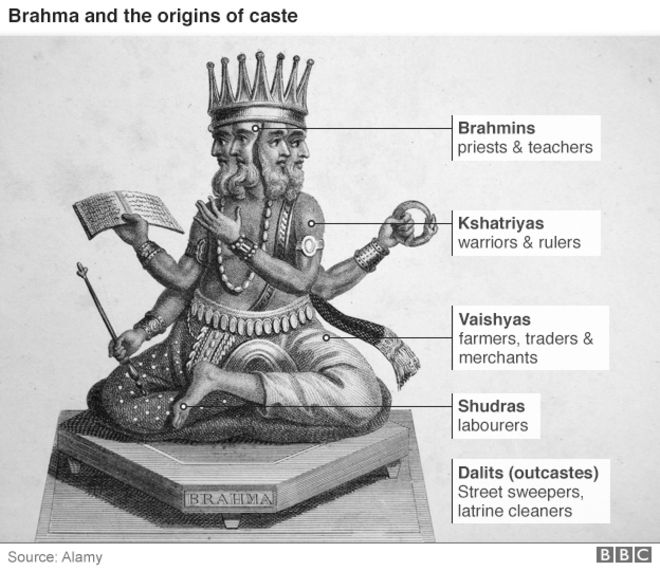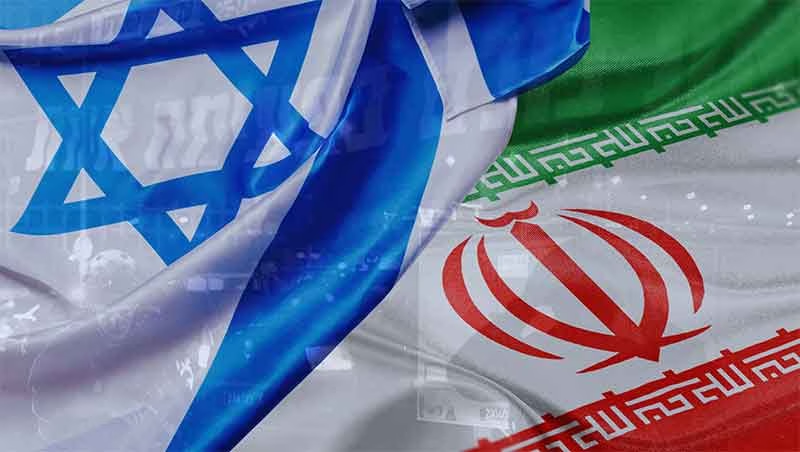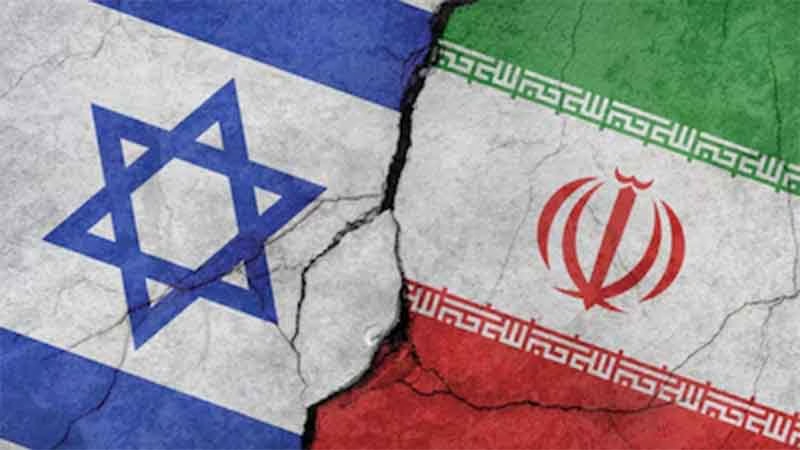
What is the status of Shudras who constitute the largest social bloc in India? In the North India, the Yadavs, Kurmis of Bihar, Yadavs and Jats of Uttar Pradesh, Gujjars of Rajsthan, the Shudras of Bengal, who are still outside the bracket of Bhadralok, the Patels of Gujarat, Marathas and Kumbis of Maharashtra, Lingayats, Vakkalingas of Karanataka, Nairs and Menons of Kerala, Modaliars, Nayakars of Tamilnadu, Kammas, Reddys and Velamas of Andhra Pradesh and Telangana constitute the top layer of Shudras in the country. In other states and regions there are other such Shudra agrarian castes that do not come under the Mandal commission reservation. In some states similar castes exist without exposure to the outside of their own state and civil society. Apart from these major upper layers of the Shudras in all states the Other Backward Classes listed for reservation are also part of the larger Shudra category of India.
This category of people have been constructed as the fourth Varna—Shudra—by the Brahmin writers in the Vedas and since then they remain as Shudras without equal rights with Brahmins, Baniyas, Kshatriyas of India in many spheres of life. Every subsequent Brahmin writer—Kautilya, Manu finally the most powerful ideologue of RSS MS Golwalaker made the maintenance of this Varna dharma order the life blood of the Hindu religion and the nation. Golwalkar said the Hindu Nation would be “The place where a people characterized by Varnas and Ashramas”— that is, following the Hindu frame-work of society, obeying the Hindu codes, in short subscribing to the Hindu religion and culture (the culture of caste). The people of the country must be Hindus by religion and culture and consequently by language to be really included in the concept ‘Janpad’ (he wrote this word in Hindi). This is a component of the Rashtra idea of the ancient Hindus (We are our nationhood defined, pp 54-55). The Hindu Rashtra that now the RSS and BJP want to crystallise through power in Delhi even with the help of Ambedkarite constitutional institutions is that the ancient kind of varna order that got disturbed with the rise of Shudra regional rulers. Also reservation has to be restored by all means. This agenda is central to RSS than any other agenda.
Golwalkar’s book appears to be mainly against Muslims but the RSS/BJP cannot take away their individual and collective access to their Allah. All forces in that community are guaranteed that right to spiritual equality. But its larger strategy is to not to allow the Shudras any accessibility to Hindu God within the Hindu religious system. This is a greater problem because the spiritual equality is basic and more important than political citizenship rights. The Shudras have not had that critical spiritual citizenship rights for millennia and the RSS/BJP are determined to maintain status quo. Unfortunately, the Shudras are their main muscle and vote power base. They do not know that they are burning their own house.
The constitutional status as citizens did not change the status of Shudras in the Hindu religion and also civil society even after 70 years of independence. The Shudras appear to have accepted that religious subordination to Brahmins and in business entrepreneurship to Baniyas. The Brahmin Baniyas of present day under the BJP/RSS rule have enough money and full control of the spiritual power. They seem to think that the Brahmin control on Sanskrit language helped them to maintain the Varna order in ancient times and their control of English now will be of immense use. English has become their nationalist language, a fact the Shudras have not at all understood.
Their position as superior people to Dalits and Adivasis also did not change. These communities practice untouchability and oppress the Dalits in the country. Now the Dalits are known as the fifth Varna and are fighting massive battle for liberation.
The upper Shudras were of the view, particularly after Independence, that they would be the Neo-Kshatriya s of India. That was because a section of them became big land owners during the British rule. In the princely states also they acquired feudal land holdings. In the Nizam state, for example, the Reddys and Velamas became the feudal land owners and acquired political power through that landed property.
So long as India was basically agrarian they controlled the vote base and hence developed a feeling that they were the real ruling elite or what was sociologically called dominant castes. In the early days of Independence the communist movement mainly targeted them by using a borrowed concept ‘feudal lords’ without realizing that because of caste character of Indian feudalism these land-owning people would not transform into capitalists, as it happened in Europe.
The Indian capitalist class mainly came from Baniya or merchant caste but not from the Shudra landed castes. As of now there are no Jat, Gujjar, Patel, Maratha, Reddy, Kamma, Lingayat or Vakkalinga, Modaliar, Nair industrialists of the kind that you see from Baniyas, Marwaris and also Brahmins in the software industry. The caste-capital nexus has become clearer after the BJP came to power—particularly in 2014.
After the Bharatiya Janatha Party/Rastriya Swayamsevak Sangh came to power at Delhi in 2014, the Shudra upward mobility seems to have taken a downward direction. At the time of Independence they thought they would play the role of classical Kshatriyas putting their feet in the shoes of classical Kshatriyas as Neo-Kshatriyas. But the emergence of the Rastriya Swayamsevak Sangh under the leadership of the modern Brahmins and the strong bondage that the RSS built with the Baniyas, who became very powerful industrial capitalists, the entire Shudra masses have now become Neo-Slaves.
Not a single Shudra leader was allowed to become the Sarsanchalak of the RSS. Nor does the RSS fight for the priesthood rights of the Shudra Hindus with properly established theological schools, colleges in Hinduism. The RSS has a concealed and well knit relationship with all the Sankara peethas and major temples such as Tirupati, Puri Jagannath, Vaishnava Devi and so on. And it operates in a manner that the Shudras remain spiritual slaves of Brahmin priest craft and financially in the margins of the Baniya capital. The strength of the Baniya capital became highly visible only after Narenda Modi and Amit Shah became the real rulers of Delhi. Till then even the nexus between Baniya capital and Baniya politics was also not very clear. In the realm of Hindu spiritual system (which is back bone for electoral operations), the Shudras have not acquired any significant spiritual and philosophical space.
The fixing of Shudras as the fourth Varna was to deny education and spiritual priesthood. In the Vedic times the Shudras were denied of the spiritual rights wherein the right to read and write spiritual ideas would throw up thinkers from their fold. They were confined to cattle grazing tasks and building the meat and milk economy for the well being of the Brahmin, Kshatriya and Vaishya communities. This situation has not fundamentally changed even in the modern capitalist era.
Control over God, using the language with which the priest engages with God was used as a weapon to keep the Shudras as the physical labour force. In order to perpetually continue their hegemony, the Brahmin spiritual intellectual force worked out various strategies to keep the Shudras under their grip. The Shudras have not attempted to weaken that grip of Brahmins and Baniyas even by the beginning of the 21 century.
The Shudras controlled state power in some parts of India in various times in history. The control of state power either in medieval times or in modern times, either during the phase of monarchical rule or of democratic rule in different parts of India, did not change their philosophical and spiritual location. Political power operates under the control of spiritual and philosophical power. Unless they acquire philosophical and spiritual equality with Brahmins or they completely go away from their control the mediocre position of the Shudras will not change. Unless the position of the Shudras changes in the spiritual and philosophical position the position of Dalits also will not change fundamentally. Because the Brahmin intellectuals, both in spiritual and secular domains, also would see to it that the Dalits are controlled by the Shudras themselves. This is a dialectical process of control and liberation. A social force that does not have the ambition of total equality with Brahmins in spiritual and philosophical domains does not allow the other social forces below them to be liberated from their own oppression and suppression.
If the Shudras get freed from this psychological slavery from Brahminism, the liberated Shudras also would not allow the Dalit liberation to follow. They are interlinked because caste hierarchy is interlinked.
The RSS never proposed that the Hindu priestly position should be caste free. They defend the hereditary Brahmin priesthood in the name of custom and Agama ordination. If they build a centralised Ram temple where the Shudras and Dalits have no right to priesthood, their spiritual slavery will increase. The Brahmin priests will also run the Indian state like the medieval Papaldom in Europe and Khalifas in the Middle East. The Shudras/Dalits and Adivasis will be finished in that system. The BJP/RSS are planning take the Shudra/Dalits to medievalism. Since the Brahmins benefit most in such a system they may help the process of building centralised temples with the same Shudra labour. This is Brahmin community’s ploy to keep even the top rich Shudras, leave alone Hindu OBCs and Dalits, under their hegemony. Once that philosophical position is taken over by Shudras lot of changes are likely to follow.
If the priesthood rights are accessed by the Shudras, the Hindu spiritual system will undergo a revolutionary change. Once the spiritual power shifts into their hands Shudras—Kammas, Reddys, Patels, Jats, Gujjars, Yadavs, and the entire other OBC social forces—will also change the fundamental basis of the Indian education system. Today the Indian education system is under the control of Brahmins—particularly the higher education is fully in their grip. This has serious negative implications to the whole Shudra education. Mahatma Phule predicted this long back. Subsequently not many Shudra leaders, intellectuals and activists understood the modern mechanism of the Brahminic operation in higher education. Unfortunately a major leader like Sardar Patel did not realize this problem and unlike Ambedkar he did not prepare any roadmap for the Shudra transformation by changing the caste relations in Hinduism, which he thought was his own religion more rigidly than Nehru did. Nehru, though by the accident of birth in a Brahmin family got everything that the RSS founder Hedgewar got and more but went against his thought by saying that by belief he was a ‘Buddhist’. He never went with Gandhi’s Hindu (Baniya) vegetarianism. He became a beeferian inviting the wrath of the RSS. But Patel quite unfortunately left his historical Shudra food culture and became vegetarian. According to Aakar Patel, as of now all Patels have become sadly pure vegetarians leaving their historical food culture.
All along while Gandhi was arguing the Varna-dharma system should not be disturbed and the caste hierarchy in Hinduism should remain as it was, Patel never protested against that view of Gandhi and the practice in the Hindu religion. Patel betrayed Mahatma Phule and Periyar Ramsami Naikar. That is the reason why the Brahmin RSS sarsanachalaks owned him and now built a biggest statue for him. Meanwhile the whole Shudra community lost a modernist philosophical vision. In a way Patel blinded them and that is the reason why the RSS/BJP celebrate his ‘Iron Brain’. It is this iron brain of Shudras that brought the RSS/BJP to power in the Centre. Now the Shudras have to fight far greater battle than the Dalits are fighting to get out of the neo-slavery.
They have to fight for reservation based on scientifically collected caste census. When the entire Shudra population also comes into reservation bloc the service sector job market of the Brahmins, Baniyas and Kshatriyas will shrink. A section of them will have to move into agrarian production and labour market. Even if a section of Brahmin-Baniyas are pushed into the domain of physical labour their philosophical orientation of life and social relations will change. From their de-humanised position, they begin to change into the process of humanization. Their work in political parties, or secular institutions, outside the domain of basic production has no bearing on social change. Because the basic hierarchies remained the same and the caste cultural relations of the production process has not changed in India. Only a Shudra rebellion against Brahminism can achieve this. The present Dalit/OBC revolt cannot achieve this goal. The RSS and its allied organizations stopped that change quite consciously.
The Brahmins not allowing this change is not surprising. But the Shudras not aspiring for the leadership of change for millennia—including in the post-Independence India- is surprising. There is a schotoma (mental bloc) within the Shudra civil society that they are incapable of handling philosophical and spiritual questions. This schotoma can be overcome only with massive English mediums education for their children. They have to get out of the Sanskritic social stagnation.
The status and position of the Shudras in the national politics and Hindu religion is systematically being controlled by political Brahmin/Baniyas. Their religious status has not changed from that of the classical Shudra position in ancient India in the institutions of religion and education even by the 21 century. The classical Shudra status was that of slaves. Quite tragically they have not even produced intellectuals who could question their slave status even by now. Nor have they realized that they remain as unequal as they were in ancient times. The first condition for any social force to fight for equality is to realize that they are unequal. The second condition is to acquire the weapons of fight to achieve equality.
The Shudras have not realized that they are unequal. Though the Dalits are far below the status of upper Shudras they have realized that they are unequal and they are acquiring the weapons of fight for equality. The Shudras so far have not acquired the weapons of fight. The key weapon is education in a language that could understand the entire structure of conspiracy of Brahminic forces. Right now only English language has that ability and the Shudras have not yet acquired mastery over that language. On the contrary the Brahmins and also Banais have acquired that mastery over English, apart from Sanskrit, which was their weapon to control Shudras in the spiritual domain.
Historically the Shudras are agrarian and artisanal and service communities which made the Indian economy sustain and progress. Their labour power has produced wealth. But this Shudra identity of theirs is lost because of thousands of castes that got subdivided into sub-castes. But no single caste that was part of the Shudra category moved into Brahmin, Kshatriya or Vaishya category. Their numbers have become their weakness within its own classical boundary. This nomenclature of the largest productive communities of India—Shudra—has become almost non-existent because of lack of its homogenous use and identity construction over a period of time.
The Dalit-Bahujan identity that I constructed in ‘Why I am Not a Hindu’ has put the Shudra upper castes outside that definition. We need to re-imagine the old identity of Shudra in a new way. To overthrow the Brahmin-Baniya hegemony in the religion, civil society and political society this re-imaging of the Shudra identity is very, very important.
Once the Mandal reservation came into practice the castes outside the pale of reserved category—who are known as the upper Shudras—believed that they do not belong to the Shudra category at all. They started believing that they are the neo-Kshatriyas of the Hindu society. But with Mohan Bhagwat, Suresh Joshi (Brahmins) Narendra Modi, Amit Shah (Baniyas), Rajnath Singh and Yogi Aditynath (Kshatriya) controlling the whole system, the Shudras of all categories have lost even the regional power. The Neo-Kshatriya ambition built for themselves got dashed to the ground.
From late the 1960s onwards, the landed feudals among these castes went on building an image that the poor Shudras have nothing to do with them. Since the Brahmins and Baniyas were obeying them in the religious and business activities within the local environment they thought they are the rulers. They started projecting them themselves as Neo-Kshatriya. They added all kinds of surnames or titles that have neo-Kshatriya essence—for example, Singh (lion), Choudari, Patel, Reddy, Rao, Nair, Yadav, Mandal and so on. These titles have given them a feeling that they transformed themselves into the Neo-Kshatriya category. The feudal landed financial status, neo-kshatriya titles have given an impression that they have become equals to Brahmins and Baniyas. But at no point of time they acquired control on a language that has the Pan-Indian presence. The present society does not run with lion’s muscles or with Iron Man’s long hands it runs with a soft power—knowledge.
In the modern period, particularly after India achieved independence they acquired some regional language education. It gave them a psychological feeling that they have acquired modernity and Kshatriya status. Quite tragically all these castes remained regional power blocs only. They have not acquired an all India identity like what the Brahmins and Baniyas acquired. More than that they could not get into an educational realm that gave them Pan-Indian language, national and global vision. They remained muscle-men to execute the Brahminic Pan-Indian plans. This is what RSS kind of organization needed. They have never developed a critical mind of enquiry and reasoning. They were happy with feudal grain treasures and village power.
During the very same period the Brahmin priest in the village connected himself with national Hindu philosophical centre and village Baniya had established connections with national mercantile/ capitalist centre. If the RSS became that philosophical centre in the religious domain the Bombay-based Baniya capital became the business centre. No Shudra could get well connected to both these centers. The Shudras have never realized that the higher national political power was/is linked up to these two Pan-Indian structures. Every religious structure has its own central agency and every business class/caste has its own headquarter. Even the Shudra feudal forces never got nexus with these central structures. Hence they remained at the national periphery.
After the RSS got established, it has been operating as the headquarters of Hinduism. It is fully in the grip of Brahmins. The headquarters of capitalist/business economy in Mumbai, in the hands of Baniyas. Shudras have no decision making role in any one of these structures. They are completely in the peripheries of spiritual thought and economic thought.
The Shudras have got into deep controlled consciousness that they need to be slaves only. They cannot think of an independent existence for themselves. This slavishness is historical and continued to operate among them. They cannot think of an autonomous operation in the realm of religion and philosophy. The RSS has understood this. Hence it makes only a Brahmin as Sarsanchalak always, like the Hindu priests of temples come from Brahmins.
This is clear after 2014 elections. The Shudras voted for the BJP and handed over power to Brahmins, Baniyas and Kastriyas, which is a very classical form of rule. The Shudras used their constitutional right to vote against their own selves.
The Shudra slavery stands out in the accepted slavish mindset of the Nair caste of Kerala, for example. Historically till the early 20th century the Nair community allowed its women to live as concubines of Brahmin men in a system called Sambhandam. They were given the right to procreate children without having any responsibility towards their life and wellbeing. This mindset has not changed. Even though they do not have the right to become priests in Hindu temples and they do not control the philosophical ruins of Hindu religious system. The way the Nair Service Society forced their women to come into the streets and oppose the Supreme Court Judgment of 2018 that all women can enter the Ayyappa Temple is a clear indication. Their women were made to oppose their own right to enter into the temple if they are in the menstruating age of 10 to 50. Hundreds of women were asked to come into streets to protest against their own spiritual right to get into the temple.
The theory of women between the age of 10 to 50 (menstrual age) should not enter into the Ayyappa temple was constructed by the Namboodri Brahmins of Kerala. Though the Shudras have no role in constructing that theory they believe that every word that Brahmin tells is true and divine and they need to work according to that Brahmin theory. Not a single Nair emerged as spiritual philosopher and challenged Brahmins and took over the temple priesthood and codified the principles of divine practice. They only implement what Brahmins codify as spiritual principles. They believed that Brahmin theory that the Nair women should live as concubines of Brahmin without rights and freedoms in the past. They now believe what Brahmins wrote as a principle that women between 10 and 50 are impure as they menstruate they should not enter temples and implement that theory by forcing their own women. The Nairs do that with a belief that it is true and act accordingly.
If only they were to get into English medium education in the modern period they would have understood the importance of religion and capital in philosophical and economic domains. They lost out even in the modern period. They never realized at any time in history—more so in modern times—mind power can easily control the muscle power. The Shudras got enrolled into the RSS Vyayamashalas but never got enrolled into the Christian English medium schools. The Brahmins and Baniyas did the opposite.
In ancient India they could not get into Sanskrit language education which had the Sub-Continental presence. They did not get into Persian language education during the Muslim rule—particularly during Mogul rule. Even subsequently they did not get into Urdu education which has a Pan-Indian presence. During the colonial period and subsequently, even after Independence, they did not get into English medium education. On the contrary they became regional language Chaunists. These castes did not produce thinkers who could handle national issues and philosophical questions.
They never believed in the power of education but strongly believed in the power of land and money. But at the same time they did not think of transforming their land power into business power so that they could enter into the capitalist entrepreneurship.
They never put their children in high end English medium schools. In fact they never thought education is power among them. They believed land as power and the neo-Kshatriya titles that they acquired. That is how Reddy, Rao, Patil, Choudary, Yadav, Goud, Nayak, Nair, Mandal (in West Bengal and Bihar) were used as surnames. These surnames or the titles as caste names helped them to control local power. These castes also acquired early local and regional political power even after the election system was introduced. The village level police and revenue power came to them from Brahmins and Muslims (in certain areas like the Nizam State and Mysore the Muslim Zamindari was also strong.). But a place to which the police station is not a match is the Hindu temple. They never understood the philosophical principle that God controls everything—including the gun.
When feudal hold on the village vote system operated as a strong instrument the Indian National Congress leaders, particularly Nehru understood their village level power and promoted some Shudra land lords at the national level, as some of them have a history of participating in the nationalist struggles. Sardar Vallabhai Patel, Kamaraj Nadar, Neelam Sanjeeva Reddy, Nijalingappa, YB Chavan emerged as national level leaders by handling raw politics with some creative ideas, but none emerged as leader and thinker who could handle philosophical, historical and theological questions. Subsequently Chaudari Charan Singh and HD Deve Gowda became the Prime Ministers of India for short period each. But because they did have not have philosophical vision and English education to back it up, they did not leave any imprint on the socio-spiritual and political system of India.
In the bureaucratic set-up, even the Shudra feudal families could not acquire a hold because as they had no English medium education. Tthey also did not think about the need for putting their children into the sophisticated English medium schools and colleges within India and abroad. Putting the children in the suitable educational institution is a philosophical and ideological issue. It is not just a question of money. There was a spiritual opposition for long time on Shudras getting educated and it became a question of orientation in due course of caste cultural existence. For example, the Brahmins made a philosophical question that the Hindu God should be communicated only in Sanskrit language at the same time to handle national and global institutions their children should study in English medium schools—preferably in Christian schools.
Even the Shudra landlords thought that their children were not suitable for that kind of educational life. Most of the Shudra land lords were uncritical admirers of Gandhi and Nehru and they thought that they would never reach their national and international stature. The real problem was in the caste cultural tradition itself. They always carried an intellectual inferiority complex vis-a-via Brahmins and Baniyas. The image of Gandhi had strengthened the village level Baniyas. For example, most of the Baniyas, across the country, even at the village level were vegetarians. They must have got this food cultural tradition because of their Jain tradition, but Gandhi made it more respectable at Pan-India level by taking up a massive campaign of linking of human food culture and his theory of non-violence. His family and the Baniya vegetarianism was historical and it started with Gandhi. He campaigned as if that was Hindu tradition in which Shudras were also part. Even Patel seems to have never opposed this kind anti-Shudra cultural value. As I said Shuras were historically multi-cuisine eaters. But Gandhi gave his family and caste food culture a nationalist twist and projected all meat or beef eaters as violent people.
The Gandhian campaign of vegetarianism went well with the North, South and West Indian Brahmins, who took to vegetarianism by then. The Post Shankaracharya Brhaminism in these regions took to vegetarianism and established as spiritually validated theory that Vegetarinism is pure food and meatarianism is impure food. But that theory became more anti-Shudra food cultural theory. Gandhi became the most modern nationalist puritan by acquiring big a place for Baniyas in modern vegetarian Hinduism. Though the spiritual Brahmins had a problem with Gandhi they invited his image into their homes very easily with vegetarian nationalism.
The only Brahmin community that did not go with that vegetarian ideology was that of the Eastern India. They were fish and meat eaters. But they did not contest the Gandhian vegetarian superiority campaign. Though by and large the Shudras of India are not vegetarian and they felt ashamed to talk about their historical meaterian food culture. The Muslims and Christian got ghettoized in this environment and even their universal food culture was projected impure.
In this process some Shudra castes in North India even turned to pure vegetarianism. The Patidars of Gujarath are one such converts. In the process the Shudras, Dalits, Adivasis began to be seen violent dull headed people because they eat meat/beef. This aspect of Baniya-Brahmin discourse not only constructed the Shudra/Dalit/Adivasi communities as violent, but were made to be seen closer to Muslims and Christians, who never believed in pure vegetarianism and food related non-violence. The Baniyas and Brahmins projected their caste culture as Hindu (religious) culture. The RSS/BJP used the same civil societal space to capture power in multiple fields—social, spiritual, political and economic. Now they want to impose pure vegetarianism on the whole nation, which is going to weaken the nation.
The Shudras did not understand the implications of leaving everything historically theirs and adopting the Brahmin-Baniya culture as theirs and also as national. Quite tragically while the Indian culture, civilization is said to have started with writing of Rigveda, which text actually divided the Indian society into four varnas. But 1500 before this text was written the city of Harappa was built. To build that city along with other cities humans used all the artisanal skills that still survive among the Indian Shudra communities. The food culture of Harappans matches with that of the Shudra/Dalit/Adivasi food culture but not with Brahmin/Baniya food culture. There was no notion of pure vegetarianism before the Jain sect emerged in the 7th century BC. The RSS/BJP will make India a Jain nation in the name of Hindu Nationalism. That will destroy the nation’s productive abilities.
The most dangerous aspect of the RSS is its commitment to sustain the classical varnadharma, with the Shudras being at the bottom to serve three varnas above them. That means even if the untouchability is abolished all the Dalits will be part of Shudra Varna and Tribals should also be added to the Shudra Varna once this phase of reservation is over. But the Brahmins/Baniyas/Kshatriyas will be as they are above all, with all the classical privileges. This is very in Golwalkar’s thesis. In his manifesto for establishing Hindu Rastra—WE OR OUR NATIONHOOD DEFINED he made it very, very clear. The Shudras of the nation must know what he said:
“ The place where a people Characterized by Varnas and Ashramas enriched itself. Characterized by Varnas and Ashramas—that is following the Hindu frame- work of society, obeying the Hindu codes, in short subscribing to the Hindu Religion and Culture—that is important. The people in the country must be Hindus by Religion and consequently by Language, to be really included in the concept Janpad (written in Hindi) a component of the Rastra, idea of the ancient Hindus” This in essence means the Shudras/Dalits/Adivasis should be where they were in ancient and medieval periods and Brahmins/Baniyas and Kshatriyas should be where they were/are.
More dangerous than this is that by invoking Manu Golwalkar lays down a code “All the people of the world to come to Hindustan to learn at the holy feet of the Eldest—born Brahmanas of this land”. In the modern Hindu Rastra the status of Brahmins should be what it was in the Vedic period where the Shudras were the slaves. If they are expecting the global Christians, Muslims, Buddhists to come to learn at the feet of Hedgewars, Golwalkars, Mohan Bhagwats and so on, one can imagine the fate of the Shudras/Dalits and Adivasis of India in future.
Prof. Kancha Ilaiah Shepherd Chairman T-MASS and political theorist.










































